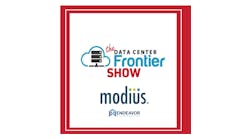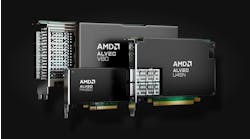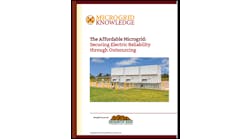Grid-to-Gate: A Framework for Understanding Power-Management Challenges
Last month, my beloved Florida Gators won the NCAA men’s basketball championship. Not only were they one of the highest scoring teams in the country, by the end of the season, they were just as good on the defensive end.
They won the championship because they excelled at both ends of the court.
I recently had a conversation with a couple of colleagues about the rapidly evolving world of power management in data centers. The industry is experiencing explosive growth, driven by artificial intelligence (AI), cloud computing and other advanced technologies. As someone who provides products to protect and manage power in these systems, I’m seeing incredible challenges and opportunities.
And it struck me. If we’re going to tackle these challenges, we’re going to have to excel at both ends of the power-management “court” in the data center – from the grid to the gate.
Grid-to-gate is a crucial framework for understanding the comprehensive power-management challenges in modern data centers. It refers to the entire power delivery path, from the electrical grid all the way down to the transistor gates in the processors at the data center. This holistic view is essential, because optimizing power efficiency and reliability requires addressing challenges at every stage of this path.
These are eight key aspects of the grid-to-gate concept:
- Grid-level considerations: Some data centers need to stagger their workload startup to allow the electric company to ramp up power delivery. This highlights the interdependence between data centers and the broader power grid.
- High-voltage distribution: As we push the boundaries of power management, we’re running into fundamental physical limits. For example, delivering a megawatt of power at 48V requires >20,000A – very difficult to do safely with reasonably sized conductors. This is driving a shift to higher voltage distribution (400V to 800V) within data centers to reduce both the current and associated losses, but that brings its own set of challenges. Some of those challenges include isolation, spacing, protection and redundancy.
- Power conversion: Stepping down from grid voltages to the low voltages used by processors necessitates multiple stages of power conversion. Each stage presents opportunities for efficiency improvements.
- Local energy storage: With the generation and feeding of more power into the system, batteries or supercapacitors near the servers can handle surge loads and provide backup power when needed to ensure that the servers stay online.
- Server-level power management: With the rise in power requirements, the future data center will have “sidecars” for power supplies. This is where you take the power supplies out of the server rack and place them in their own rack right next to the servers. The sidecar evolution is just one example of reimagining power delivery even at the rack level.
- Component-level innovations: Technologies such as gallium nitride switches and integrated hot-swap eFuses are pushing the boundaries of efficiency and power density at the component level.
- Processor power delivery: Getting power efficiently to the transistor gates in modern high-performance processors is a significant challenge, especially with current demands reaching thousands of amperes. Vertical power delivery will be an important technology to enable improved efficiency.
- Intelligent power management: Throughout the power delivery chain, there’s an increasing emphasis on adding intelligence, diagnostics and predictive capabilities to optimize performance and reliability. This includes developing isolation technologies that can withstand up to 1,000V for 40 years in a tiny package.
We’re at the forefront of a third energy revolution, focused on control and efficient power delivery. The need for innovation is immediate and vital, as energy demand is growing faster than our ability to generate it. The grid-to-gate concept emphasizes that optimizing data-center power requires a systems-level approach. Inefficiencies elsewhere can undermine improvements at any single point in the chain. By considering the entire path from grid to gate, engineers can develop more holistic and effective solutions to the power challenges posed by AI and other advanced computing technologies.
As we push forward, at TI we’re leveraging decades of experience from other industries such as automotive and energy. We’re also embracing a fast-paced, iterative approach to product development, allowing us to learn and improve quickly.
In my many years in this field, I’ve never seen anything quite like what’s happening now in data-center power management. It’s a revolutionary time, and I’m thrilled to be part of it, working on some of the most exciting and important problems in technology today. Also, go Gators.
Watch this video to learn more about how TI helps power data centers from the grid-to-the gate.

Robert Taylor
Robert Taylor is a Sector General Manager for Industrial Power Design Services at Texas Instruments and has over 20 years of power-supply design experience with a focus on solving customer design challenges.
Texas Instruments is a global semiconductor company that designs, manufactures, and sells analog and embedded devices. With the most comprehensive portfolio of general purpose analog products, we are in constant pursuit of helping designers push the limits of power density and efficiency across markets, including automotive, industrial, and enterprise systems.






